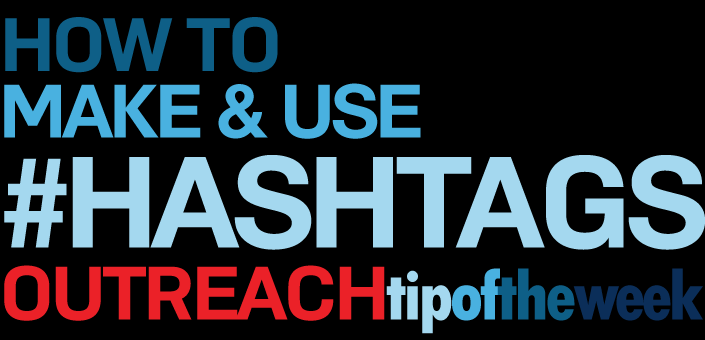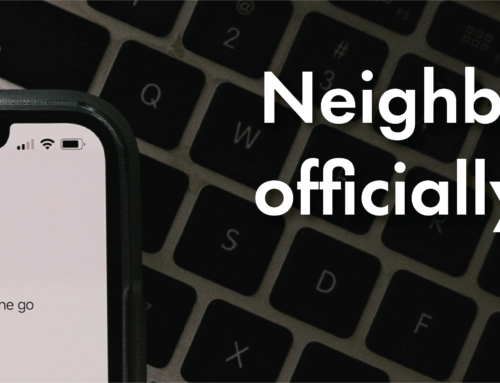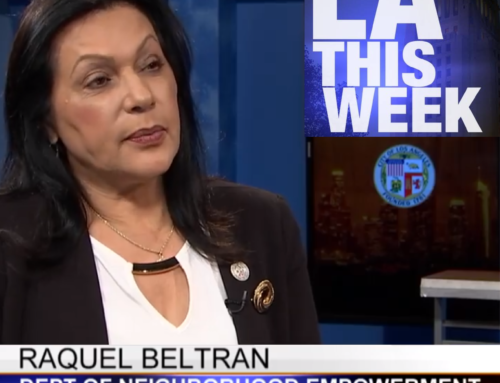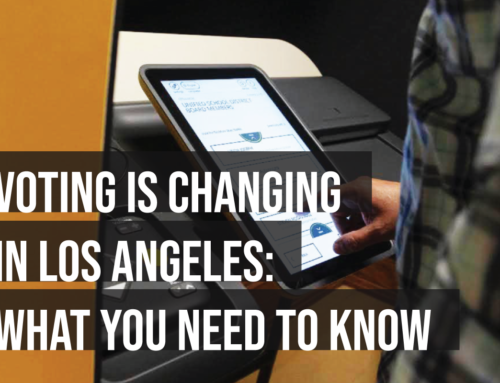#Hashtags are a social media indexing tool that help people interested in what you have to share find your posts. Read on to learn what hashtags work best for Neighborhood Council outreach, and how to use them on social media without being annoying or sounding unnatural.
How hashtags work
Hashtags batch online conversations so that it’s possible to pull up all the current posts on a given subject. You can enter them into a search engine like Google, to see what’s being said across all popular social media platforms, or you can enter them in the search bar on a particular platform, like Instagram.
Hashtags are an SEO, or Search Engine Optimization, tool. SEO is the art of being findable online and on social media. Good SEO relies on finding and using the keywords or keyword phrases that are central to what you do, who you are, and in the case of a Neighborhood Council, where you are. Good hashtags are created by placing a # in front of those essential keywords and phrases.
What hashtags work best for Neighborhood Councils
Hashtags are like a party – it’s not a party if you’re the only one there, but if it’s too crowded, it will be impossible to have a conversation over the noise. Similarly, if you arrive too late, the food and drinks are probably all gone.
The goal is to choose hashtags that are both timely and popular enough to make a connection, without using ones that are so popular that your news won’t stand out anymore. For example, there are 50,000 Instagram posts with the hashtag #GranadaHills, and 280,000 with the hashtag #BoyleHeights, but there are over 35 million posts for #LA and over 28 million for #LosAngeles.
Here are some suggestions for hashtags that work well for Neighborhood Council outreach:
- Target members of your local community by using regional names (#HighlandPark, #SanPedro) rather than #LosAngeles or #LA
- #NeighborhoodCouncil or #NeighborhoodCouncils are both good, but the singular is more popular than the plural.
- A shortened version of your board name or your acronym also makes a good hashtag: #ASNC, or #ArroyoSecoNC, for example.
- Create and use hashtags for your special events so people know how to share and find photos and videos afterwards. The annual Congress of Neighborhoods event, for example, uses the hashtag #NCCongressLA.
- Use hashtags to highlight focal points of your post. Is this a #CityPlanning and #LandUse meeting? A #PublicSafety or #EmergencyPreparedness event?
- If your news is related to an another event or holiday, hashtag it, to attract social media users looking for things to do in your area – for example, #LaborDay or #4thOfJuly
TIP: don’t use hashtags as punchlines. You’ve seen the type of social media post where someone puts up a picture of themselves relaxing at the beach, with hashtags like #WorkingHard or #TakingCareofBusiness. This may be entertaining, but your stakeholders are probably not out there looking for information on topics like #SeeWhatIDidThere. It’s okay to make jokes – it humanizes you in front of your audience, and bringing a human face to government is part of what Neighborhood Councils are about. Just don’t forget to use relevant hashtags too, like the ones suggested above, to make sure your outreach efforts are making a connection.
How to research hashtags
There are hashtag research tools like Hashtagify, which has free and paid versions. However, a very helpful, no-cost way to get a quick read on the relative popularity of a given tag is to search hashtags on Instagram. Enter the term into the search bar and select the Tags option at the top of the screen, to discover how many times a hashtag has been used on that app. While this figure can be very different results on another platform, such as Twitter, it’s an easy way to at least determine the relative popularity of one hashtag vs. another.
Hashtag formatting tips
Make hashtags easier to read by combining upper and lowercase letters to keep words from running together visually. #NeighborhoodCouncil is easier to read than #neighborhoodcouncil, yet both these hashtags will pull up the exact same set of conversations.
Use alternate spellings to account for the different ways your audience might refer to something: #NYE, #NewYears, or #NewYearsEve, for example. If it looks too repetitive to use all the variations in a single post, research the different versions first to see which are the most popular, and stick to those. If there is a significant audience for multiple versions of a hashtag, consider using different versions in different posts, to get good audience coverage.
It is important to check the relative popularity of different versions of a hashtag, because hashtag searches are very literal. They do not suggest related material, as Google or other search engines will; they only pull up conversations that use that exact hashtag as written. That means the person looking for #NYE activities is not going to see your post about #NewYearsEve.
How to make hashtags sound natural
Hashtags look and sound best when they’re integrated into the flow of what you’re writing. So for example, you can say that the #SouthCentral #NeighborhoodCouncil is having a #healthcare fair this weekend. Or you can write that #NationalNightOut is happening in #ShermanOaks on Saturday.
How many hashtags to use per post?
We’ve all seen that #socialmedia #post that is so full of #hashtags that #youcanteventellwhatitmeansanymore. It feels aggressive and annoying, like spam, and it disrupts the flow of what you’re trying to read.
Studies have shown that the number of hashtags users will tolerate per social media post varies a bit according to the outlet being used (see details on that plus more tips on how to use hashtags effectively in this excellent article.) With Twitter’s 140 character limit, that automatically keeps the hashtag count low. However, with Instagram and Facebook, you can write as much as you want, and therefore run the risk of spammy hashtags.
A good rule of thumb is to use only 1-2 hashtags per post on Facebook or Twitter. On Instagram, you can use up to 10 hashtags before people become overwhelmed, but do not use more than 1 or 2 in the body of your actual post. Instead, pile up the rest of the hashtags at the bottom of the post, in a separate section, so they attract interested people to your post without interfering with your main message. (If you don’t know how to create a post with sections on Instagram – which isn’t possible to do in the app itself – that will be covered in an upcoming Outreach Tip article.)
Outreach Tip Of The Week is an ongoing series on using communications, branding, marketing, and public relations to build better relationships with your stakeholders. Send your outreach questions to annmarie@empowerla.org for the chance to be featured in a future Outreach Tip article.






